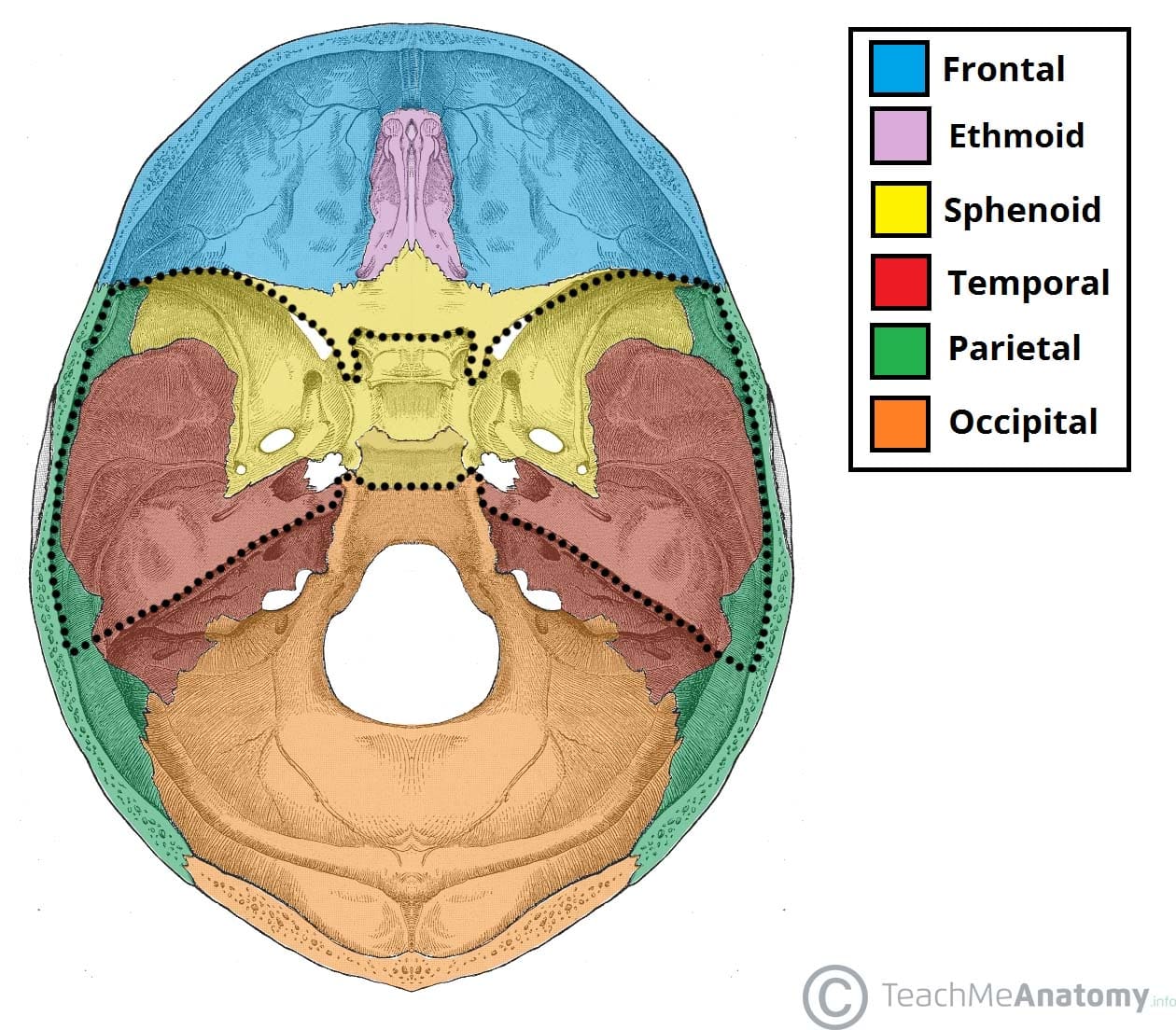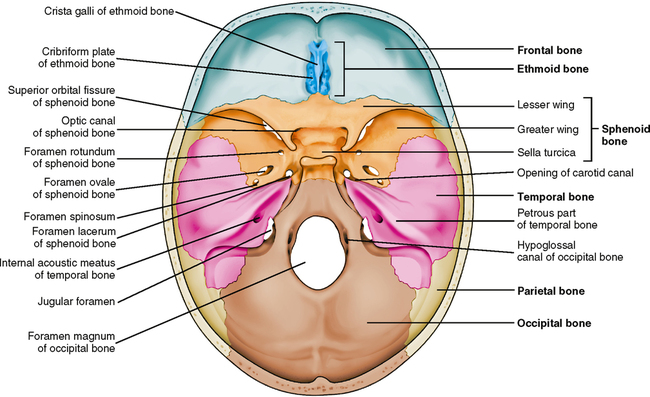Cranial Floor Openings

The cranial base is formed by five bones.
Cranial floor openings. In the depths of the middle cranial fossa we have the foramen ovale which is the oval shaped foramen which allows the mandibular branch of the trigeminal nerve to leave the skull. This is a complex area that varies in depth and has numerous openings for the passage of cranial nerves blood vessels and the spinal cord. These openings are collectively referred to as the cranial foramina. In the cranial cavity the ethmoid bone forms a small area at the midline in the floor of the anterior cranial fossa.
Skull cranial floor bone markings part 2 temporal bone. The sphenoid bone is a butterfly shaped cranial bone that is located in the middle of the skull between the frontal and temporal bones. This portion of the ethmoid bone consists of two parts the crista galli and cribriform plates. Basis cranii is the most inferior part of the skull forming the floor of the cranial cavity.
Inferior surface attachment of muscles marked in red. Foramen rotundum this rounded opening rotundum round is located in the floor of the middle cranial fossa just inferior to the superior orbital fissure. It is composed of the endocranium and the lower parts of the skull roof. Openings foramina and canals of the middle cranial fossa.
The floor of the brain case is referred to as the base of the skull. The cranial base can be inspected from two sides from inside and outside. The cranial base also known as base of skull skull base. It lies lateral to the foramen lacerum and anteromedial to the foramen spinosum.
Structures found at the base of the skull are for example. The 12 cranial nerves are pairs of nerves that start in different parts of your brain. We ll start with the ones that pass forwards. It is the exit point for a major sensory nerve that supplies the cheek nose and upper teeth.
The human skull has numerous openings foramina that enable cranial nerves and blood vessels to exit the skull and supply various structures. Ethmoid sphenoid occipital paired frontal and paired temporal bones. We ll go over how these nerves are. We ll look at three openings that pass forwards two openings that pass downwards and one that in spite of appearances passes obliquely backwards.
This region also forms the narrow roof of the underlying nasal cavity. The cranial cavity floor is divided into three distinct recesses the anterior fossa middle fossa and posterior fossa. The base of skull also known as the cranial base or the cranial floor is the most inferior area of the skull. They control everything from your facial expression to digestion.













































